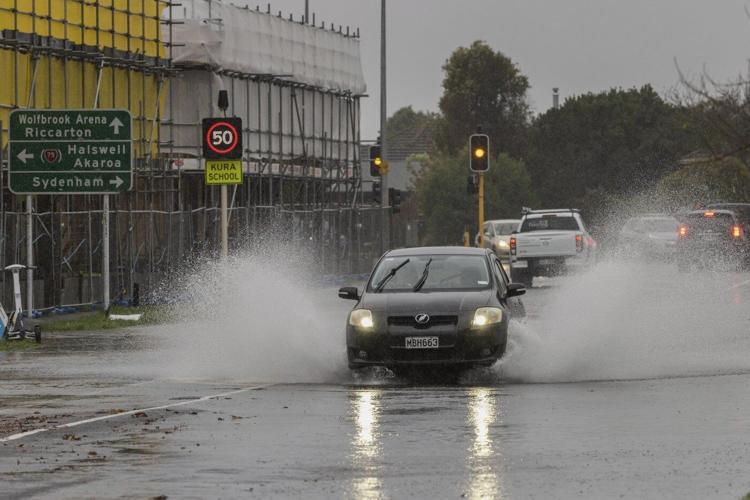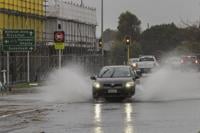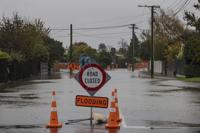WELLINGTON, New Zealand (AP) — Severe weather warnings covered swathes of New Zealand on Thursday with heavy downpours prompting a state of emergency for the South Island's largest city, Christchurch, while forecasters recorded “destructive” gales in the capital, Wellington.
Heavy snow and large waves lashed other parts of the country. No deaths or serious injuries were reported. The extent of damage was not clear by afternoon, but evacuations were not widespread.
Thursday’s red wind warning for Wellington, at the southern end of New Zealand’s North Island, was the first time the capital — famous for its gusty gales — has ever faced the most severe alert level. Residents were urged to stay indoors, avoid travel and keep away from doors and windows as gusts of up to 150 kph (93 mph) posed a “threat to life” from falling trees and flying objects, the forecaster Metservice said.
Flights to and from Wellington were cancelled throughout Thursday and between the North and South Islands were halted until at least Friday afternoon. Metservice expected 5 meter (16 foot) swells in the Cook Strait, the body of water between New Zealand’s two largest islands.
About 1,000 properties were without electricity Thursday afternoon in the wider Wellington region, which has a population of 550,000. The city’s largest university closed for the day, the Royal New Zealand Ballet cancelled an evening performance, and several schools sent students home.
Wellington is New Zealand’s windiest city -- registering gusts at gale speeds of 63 kph (39 mph) on about half the days of the year. But Wellington’s emergency management chief, Dan Neely, warned residents to take the warnings seriously because the southerly tempest was unusually strong and could threaten lives, Radio New Zealand reported.
In the city of Christchurch, the largest on the South Island, and in some nearby rural areas, heavy deluges caused rivers to spill over their banks, closing roads and prompting fears the floodwaters could reach homes. Local states of emergency were declared Thursday, including in Christchurch, Emergency Management Minister Mark Mitchell told reporters.
Orange-level warnings -- the second most serious -- were issued across parts of both islands for severe rain and large sea swells, and in some South Island districts for heavy snow. The storm system that lay across much of the country Thursday was due to ease Friday.
New Zealanders are accustomed to wild winter conditions because of geographic features that produce variable and sometimes across the country of 5 million people. But it was unusual that such widespread warnings were issued.










































